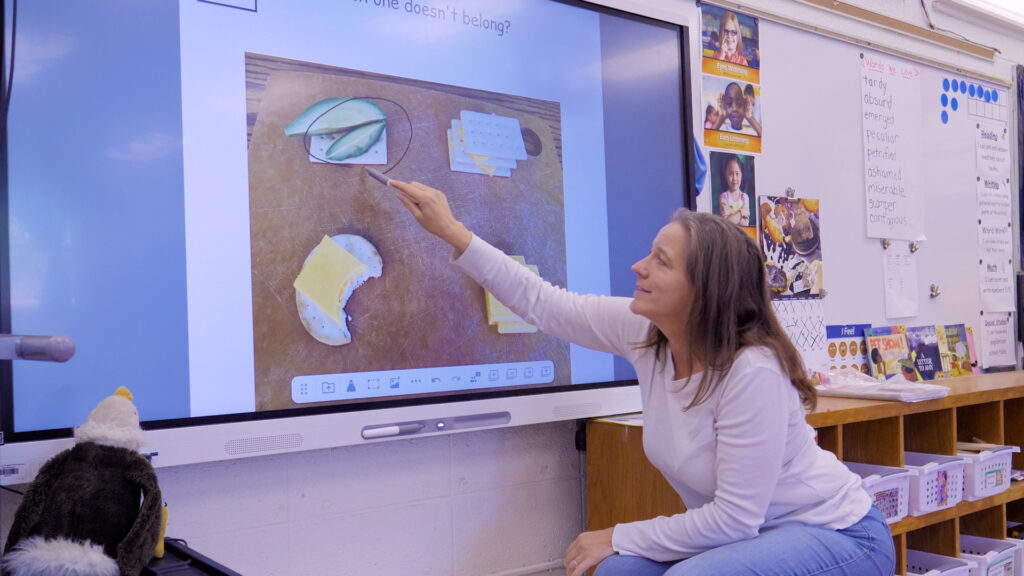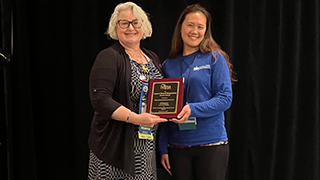Michigan awards $87 million for schools to buy proven literacy materials – Bridge Michigan

Michigan’s Strategic Investment in Literacy to Advance Sustainable Development Goal 4
Executive Summary: Aligning State Efforts with Global Education Mandates
The state of Michigan is undertaking a significant initiative to enhance literacy outcomes, directly contributing to the achievement of Sustainable Development Goal 4 (SDG 4), which aims to ensure inclusive and equitable quality education for all. State funds are being allocated to public school districts to procure evidence-based curricula, support materials, and professional development. This report details the financial investment, outlines the current challenges in meeting SDG 4 targets, and describes the strategic interventions being implemented.
- Over 550 school districts will receive funding to improve literacy instruction.
- The initiative addresses critical deficiencies in student reading proficiency, a key indicator for SDG Target 4.1.
- The program emphasizes evidence-based teaching methods and professional development, aligning with SDG Target 4.c.
Analysis of Current Literacy Performance and SDG 4 Targets
Current literacy metrics in Michigan indicate a significant challenge in achieving quality educational outcomes as outlined in SDG 4. The state’s performance in reading lags behind that of regional peers, and post-pandemic recovery has been slow. This directly impacts the state’s progress toward key global education benchmarks.
- Only 39.6% of third-grade students achieved proficiency in English language arts in 2024, falling short of the standards for effective learning outcomes specified in SDG Target 4.1.
- The widespread use of 444 different English language arts curriculum resources during the 2022-2023 school year highlights a lack of standardization, which can impede the delivery of consistent, quality education.
- These statistics underscore the urgent need for targeted interventions to ensure all youth achieve fundamental literacy as mandated by SDG Target 4.6.
Financial Allocation and Programmatic Interventions
The Michigan Department of Education (MDE) has awarded $87 million to 561 school districts to address these literacy challenges. The funding is a direct investment in the infrastructure required to deliver quality education (SDG 4) and is allocated across three primary areas:
- Evidence-Based Curricula: 368 districts received funds to purchase state-approved, research-aligned reading programs.
- Student Interventions: 64 districts were funded for specialized programs designed to support students who are behind in reading.
- Professional Development: 129 districts received grants to provide teachers with advanced training in literacy instruction.
Strategic Initiatives for Quality Education and Teacher Development
The state’s strategy is multifaceted, focusing on standardizing teaching methods and enhancing educator qualifications, which are central tenets of SDG 4.
Alignment with Evidence-Based Practices
The program incentivizes the adoption of teaching methods aligned with the “science of reading.” By providing a curated list of approved resources, the state aims to streamline instruction and ensure all students receive high-quality, effective literacy education. Districts may select from:
- Eight curricula for whole-group instruction
- Four literacy intervention programs
- Eight professional development programs
Enhancing Teacher Qualifications (SDG Target 4.c)
A core component of the initiative is the investment in teacher training, which supports SDG Target 4.c (substantially increase the supply of qualified teachers). In addition to the district-level grants, the state has committed a total of $34 million for Language Essentials for Teachers of Reading and Spelling (LETRS) training, with 5,000 educators having completed the program to date. Further legislative actions require educator preparation programs to include training on dyslexia and other evidence-based literacy instruction, ensuring a sustainable supply of qualified teachers for the future.
Analysis of Sustainable Development Goals in the Article
1. Which SDGs are addressed or connected to the issues highlighted in the article?
The primary Sustainable Development Goal (SDG) addressed in the article is SDG 4: Quality Education. The entire article focuses on efforts to improve educational outcomes in Michigan, specifically in the area of literacy.
- The article details a state-funded initiative to provide public school districts with “evidence-based literacy curricula, student support materials and professional development for teachers.”
- It highlights the problem of low literacy scores, stating that Michigan children are “lagging in reading compared to their peers” and that only “39.6% of third graders were proficient or higher in English language arts in 2024.”
- The efforts described, such as funding, teacher training, and adopting new curricula, are all aimed at ensuring inclusive and equitable quality education and promoting lifelong learning opportunities, which is the core mission of SDG 4.
2. What specific targets under those SDGs can be identified based on the article’s content?
Several targets under SDG 4 are relevant to the content of the article:
- Target 4.1: By 2030, ensure that all girls and boys complete free, equitable and quality primary and secondary education leading to relevant and effective learning outcomes.
- The article’s focus on improving literacy scores for elementary school students directly relates to achieving effective learning outcomes in primary education. The state’s investment is a direct attempt to address the fact that students are “lagging in reading.”
- Target 4.6: By 2030, ensure that all youth and a substantial proportion of adults, both men and women, achieve literacy and numeracy.
- This target is central to the article. The initiative to fund “evidence-based literacy curricula” and “interventions… for students who are behind in reading” is a clear effort to ensure youth achieve literacy.
- Target 4.c: By 2030, substantially increase the supply of qualified teachers, including through international cooperation for teacher training in developing countries, especially least developed countries and small island developing States.
- The article explicitly mentions funding for “professional development for teachers” and covering the “cost of training teachers to help students build literacy skills.” It also notes that “$34 million for Language Essentials for Teachers of Reading and Spelling training” (LETRS) has been offered and that 5,000 educators have completed it, directly addressing the goal of increasing the supply of qualified and well-trained teachers.
- Target 4.a: Build and upgrade education facilities that are child, disability and gender sensitive and provide safe, non-violent, inclusive and effective learning environments for all.
- While not about physical buildings, the provision of “evidence-based literacy curricula” and “student support materials” contributes to creating “effective learning environments.” The effort to reduce the 444 different curriculum resources to a smaller, evidence-based list is an attempt to standardize and improve the quality of the learning environment across the state.
3. Are there any indicators mentioned or implied in the article that can be used to measure progress towards the identified targets?
Yes, the article mentions several quantitative and qualitative indicators that can be used to measure progress:
- Indicator for Targets 4.1 and 4.6: The proportion of children achieving a minimum proficiency level in reading. The article provides a baseline for this indicator by stating, “only 39.6% of third graders were proficient or higher in English language arts in 2024.” Future measurements of this percentage would indicate progress.
- Indicator for Target 4.c: The number of teachers who have received training. The article states, “So far, 5,000 educators have completed the training” (LETRS), which serves as a direct measure of progress in teacher qualification.
- Indicator for Target 4.c and 4.a: The amount of financial resources allocated to education initiatives. The article specifies that “$87 million” is being awarded to school districts for curricula, interventions, and professional development. This financial commitment is an indicator of the effort being made.
- Indicator for Target 4.a: The number of schools implementing improved educational resources. The article notes that “561 school districts” will receive funds, including “368 districts for evidence-based curricula” and “64 districts for ‘interventions’.” Tracking the adoption and use of these materials serves as an indicator of creating more effective learning environments.
4. Summary Table of SDGs, Targets, and Indicators
| SDGs | Targets | Indicators Identified in the Article |
|---|---|---|
| SDG 4: Quality Education | 4.1 Ensure all children complete free, equitable and quality primary and secondary education. | Percentage of third-grade students proficient in English language arts (Baseline: 39.6%). |
| SDG 4: Quality Education | 4.6 Ensure all youth achieve literacy and numeracy. | Implementation of evidence-based literacy curricula and intervention programs for students behind in reading. |
| SDG 4: Quality Education | 4.a Build and upgrade education facilities to provide effective learning environments. | Number of districts receiving funds for evidence-based curricula and interventions (368 for curricula, 64 for interventions). |
| SDG 4: Quality Education | 4.c Substantially increase the supply of qualified teachers. |
|
Source: bridgemi.com

What is Your Reaction?
 Like
0
Like
0
 Dislike
0
Dislike
0
 Love
0
Love
0
 Funny
0
Funny
0
 Angry
0
Angry
0
 Sad
0
Sad
0
 Wow
0
Wow
0

























_1.png?#)





















































